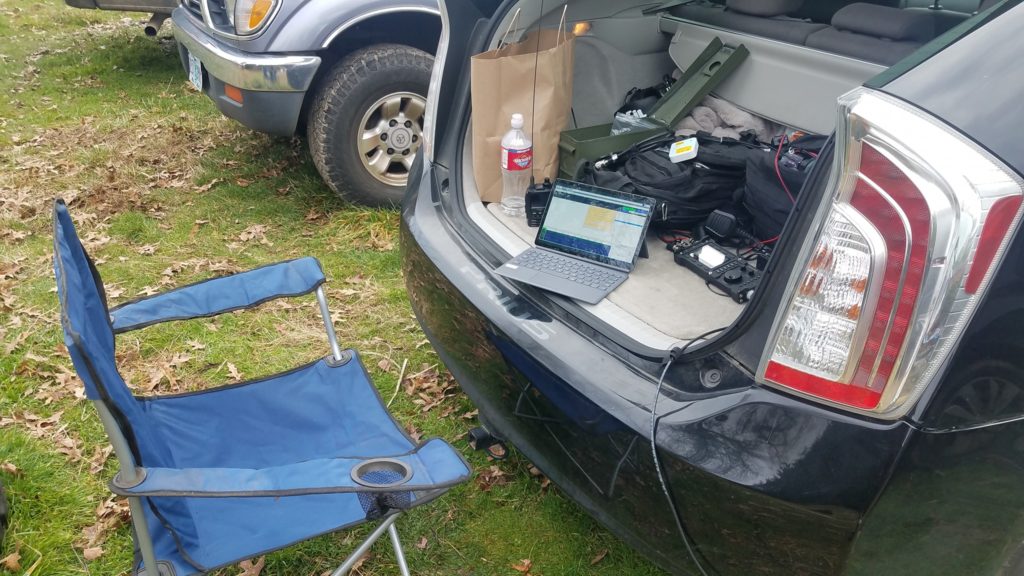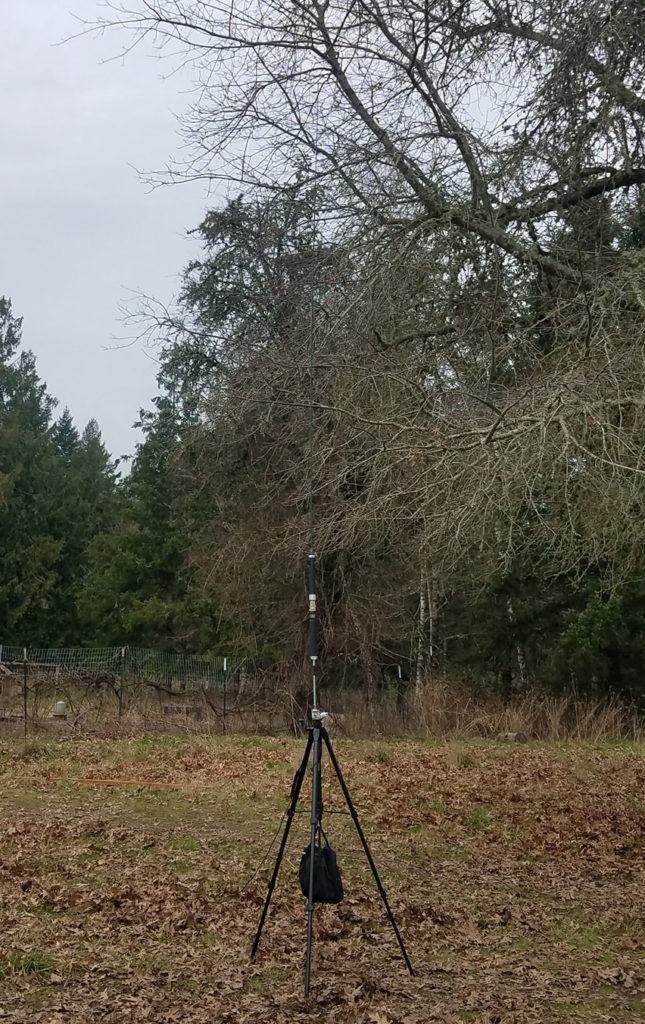I had the opportunity to spend a few hours in the Oregon countryside while my partner had a meeting. Naturally I decided to do deploy my new radio, the Lab599 Discovery TX-500 along with my second purpose-built digital comms Raspberry Pi. The other is used with my Yaesu FT-857D.

I began by setting my rig up in the trunk of my car. Since I wanted to at least simulate running off grid on battery I didn’t connect my radio to the car and opted to use my 40Ah Bioenno LiFePO4 battery. I had intended to bring my smaller 12Ah Bioenno LiFePO4 battery which was actually purchased for the TX-500 kit, but I had spaced it and left it on the charger. Despite the cloudy weather that is typical of Oregon this time of year I also brought my GoalZero Nomad 20 to see if I could extend my runtime even if slightly and to give it a good test. Every little bit of extra juice helps, but I only used 1.8Ah of battery the entire 5.5hr deployment! The solar panel did provide an additional 0.8Ah which is 44% of what the battery provided.

Solar panel on the car and facing south

The first antenna I deployed and ran was my Superantenna kit, but instead of using the titanium whip supplied with the kit I added the Chameleon Mil Whip 2.0 to get more efficiency and significantly wider SWR bandwidth. I tuned the antenna up for 20m using my NanoVNA and ran JS8Call on the TX-500’s dedicated Raspberry Pi… using my tablet as a keyboard and screen over VNC. I had a number of successful contacts from the Southwest to AK and managed to relay a text message to a friend in NM via an operator in-state running 9w!

I did try to make some SSB phone contacts but there was a contest going so I didn’t really get too far. As the sun started going down I noticed the 20m band was starting to close, so I tuned to 40m and the contest was still going on so I wasn’t able to make any contacts. It can be difficult to raise anyone during a contest because a lot of folks are talking and running high power so it’s very easy to be drowned out.
In general I also like to try more than one antenna or antenna configuration per deployment so I set up my Chameleon EMCOMM Portable III in an inverted “V” configuration with the center point hung using an arborists’s weight and some paracord in a tree. I was able to make some JS8Call contacts and was able to hear a lot of distant operators. Again, I was unable to make a contact using SSB phone despite the fact that the tuned inverted V configuration should technically be more efficient than a loaded vertical. I’ll need to do another test on another day.
